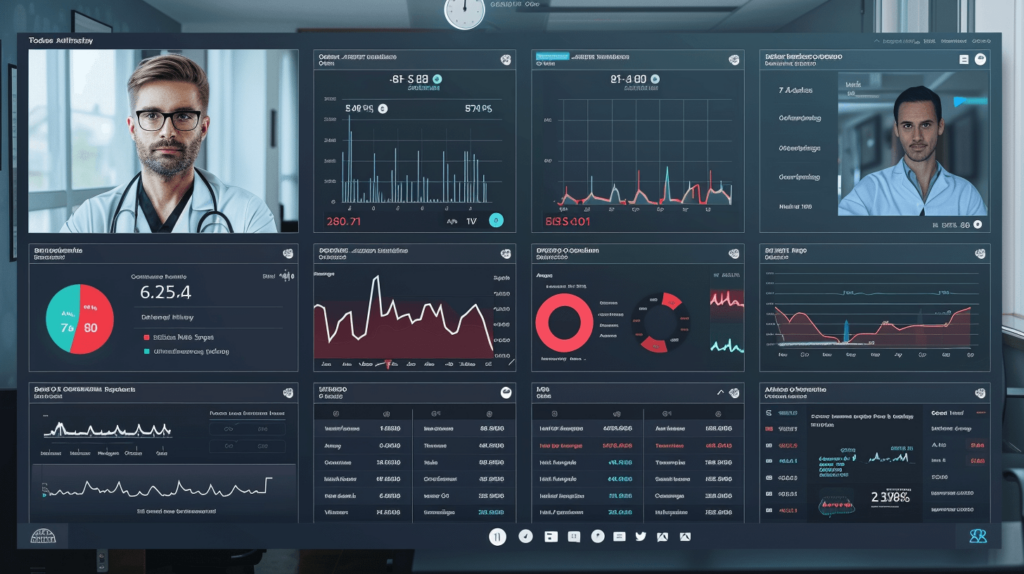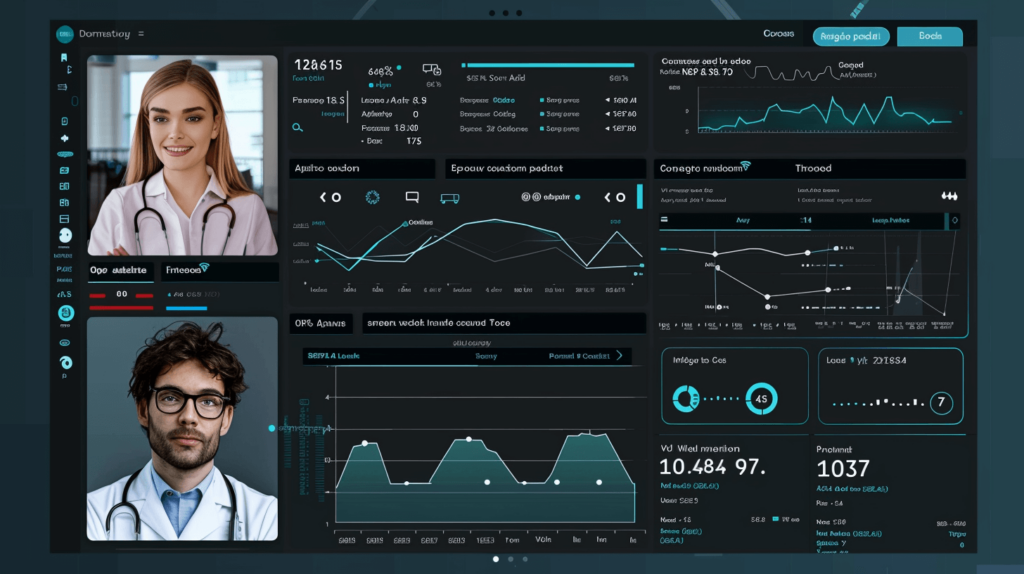Introduction

In the rapidly evolving world of healthcare, telehealth has revolutionized patient access to medical professionals, allowing patients to connect from anywhere. But as telehealth services grow, so does the demand for responsive, efficient, and empathetic customer support. Scaling a telehealth customer support team is crucial for ensuring that patients receive high-quality care without frustrating delays, ultimately enhancing the telehealth experience and patient satisfaction.
Expanding a telehealth support team presents unique challenges. Unlike traditional customer service, telehealth support requires specialized knowledge, compliance with strict privacy regulations, and the ability to handle sensitive medical concerns with empathy and precision. In this guide, we’ll explore why scaling telehealth support matters and break down key steps to do it successfully. From leveraging technology to prioritizing patient-centered practices, let’s dive into building a scalable telehealth support team that’s both efficient and compassionate.
Understanding the Telehealth Customer Support Landscape

Scaling a telehealth support team starts with understanding what makes this support niche unique. Telehealth support is more than just answering questions; it requires a combination of technical knowledge, regulatory compliance, and soft skills like empathy and patience.
What Makes Telehealth Support Unique?
Compliance with Privacy Laws
Telehealth support agents must adhere to strict data protection laws, like HIPAA in the United States, which safeguard patient information. This legal framework requires that all communications, storage, and data handling meet high standards of security. Support teams are not only responsible for assisting patients with telehealth platforms but also ensuring that all information shared remains confidential.
Handling Sensitive Medical Concerns
A telehealth support team is frequently the first point of contact for patients dealing with medical concerns. Unlike retail support, which may involve simple product inquiries, telehealth support may include questions about prescriptions, symptoms, and other health-related issues. This makes empathy a cornerstone of effective support, requiring agents to engage with sensitivity and professionalism.
Technological Fluency
Given the nature of telehealth, support agents need to be tech-savvy, often assisting patients who may struggle with online platforms, video calls, or mobile apps. Technical knowledge enables the team to troubleshoot effectively, ensuring that patients can access care without technical interruptions.
Key Metrics for Successful Scaling

Before expanding a telehealth support team, it’s essential to identify and track the right performance metrics. Here are a few key indicators that ensure a support team is scaling effectively:
First Response Time (FRT) – How quickly does the team respond to incoming queries? A swift response reassures patients that they’re valued and heard.
Resolution Rate – How often are issues resolved on the first contact? High-resolution rates mean the team is well-trained and effective.
Patient Satisfaction (CSAT) – Are patients satisfied with the support they receive? This can be measured through surveys and feedback forms.
Compliance Rate – Is the team meeting all regulatory standards, such as data security and privacy requirements? This metric is particularly critical in telehealth.
Steps to Scale a Telehealth Customer Support Team

To ensure that scaling meets both operational and patient satisfaction goals, there are several key steps to follow.
Assess Current Support Capabilities
Scaling begins with an honest assessment of where your support team currently stands. This includes evaluating response times, patient feedback, and any gaps in skill or knowledge. Reviewing current capabilities helps identify areas for improvement and set realistic scaling goals.
Example: A telehealth provider notices a delay in first response times, particularly during peak hours. By identifying this, they can plan to add additional agents or shift work hours to meet demand more effectively.
Leverage Technology for Efficiency
The backbone of a scalable telehealth support team is technology that makes processes more efficient. Here are some essential tools for improving both efficiency and patient satisfaction:
Customer Relationship Management (CRM): A CRM platform designed for telehealth can integrate patient records and interactions, allowing agents to provide personalized support and quickly access relevant patient information.
AI and Chatbots: Implementing AI-driven chatbots can handle routine inquiries, such as appointment scheduling or basic tech support. This frees up human agents to focus on more complex cases requiring a personal touch.
Ticketing Systems: A centralized ticketing system ensures that each patient query is documented and tracked through to resolution, minimizing the risk of lost or unresolved cases.
Example: By introducing an AI chatbot to handle common questions like “How do I schedule an appointment?” or “How can I reset my password?” telehealth providers can reduce the burden on human agents and shorten response times.
Invest in Specialized Training
Telehealth support agents require a unique set of skills. Beyond standard customer service training, these agents must be equipped to handle medical-related queries, remain compliant with privacy laws, and engage with empathy. Continuous training ensures that the support team is up-to-date with industry regulations, new software, and evolving patient needs.
HIPAA and Data Privacy Training: Compliance with data privacy laws is essential in telehealth. Regular training on HIPAA and other relevant regulations helps agents navigate patient inquiries without compromising sensitive information.
Empathy and Patient-Centered Communication: Effective communication in telehealth support means showing genuine empathy. Patients need to feel heard and understood, especially if they’re dealing with health issues.
Technical Troubleshooting Skills: Equip agents to assist patients in navigating telehealth platforms, troubleshooting video calls, and using patient portals, as many patients may struggle with digital tools.
Example: A telehealth provider hosts monthly role-playing exercises where agents practice common support scenarios, such as assisting a patient who is frustrated with tech issues. This prepares agents to respond professionally and empathetically in real-world situations.
Implement Multichannel Support
Patients interact with telehealth services in various ways, so offering multichannel support is essential for a scalable customer support team. Multichannel support means providing assistance through multiple avenues, such as phone, chat, email, and even video support, allowing patients to choose the option most comfortable for them.
Phone Support: Ideal for quick, straightforward inquiries or for patients who prefer speaking directly to a person.
Live Chat: Provides instant responses for common questions or minor technical issues.
Email Support: Suitable for more detailed or complex queries, where a documented response may be necessary.
Video Support: Some inquiries, particularly those involving platform navigation or setup, benefit from visual support via video calls.
Example: A telehealth company introduces a video support feature where agents guide patients through platform setup. This can significantly improve the patient experience for those who are unfamiliar with technology.
Technology and Tools for Telehealth Customer Support Scaling

Scaling a telehealth customer support team isn’t just about adding more staff—it’s about building a system that can handle a growing volume of patients while delivering a high-quality, patient-centered experience. Technology plays a pivotal role in this. From CRM systems that streamline communication to AI-powered tools that provide efficient, round-the-clock assistance, the right tech choices can supercharge a team’s ability to meet patient needs.
Customer Relationship Management (CRM) Software
A robust CRM system is indispensable for telehealth support, serving as the central hub where all patient interactions and data are organized and accessible. A CRM tailored for telehealth integrates patient records, previous inquiries, and even appointment histories, allowing support agents to respond with full context. This not only speeds up response times but also provides a more personalized patient experience.
Example: Imagine a patient contacting support for help with a recent appointment issue. With a telehealth CRM, the agent can immediately access the patient’s appointment history and interaction notes, streamlining the resolution process and creating a seamless, personalized experience for the patient.
AI and Chatbots for Preliminary Assistance
Artificial intelligence (AI) tools, particularly chatbots, are transforming telehealth support. Chatbots can handle common inquiries—like appointment scheduling, prescription renewals, and general FAQs—at any time of day. By automating routine queries, chatbots free up human agents to focus on complex cases that require personal attention.
Example: A telehealth provider implements an AI chatbot to answer questions such as “How do I reset my password?” or “What are the operating hours?” Patients get instant responses to routine questions, and human agents are only brought in for issues that need a more nuanced touch.
Data Security and HIPAA Compliance Tools
Telehealth involves sensitive medical data, and data security is non-negotiable. Implementing HIPAA-compliant communication tools, secure databases, and data encryption ensures that patient privacy is protected at every touchpoint. Technology that automates data privacy processes, such as secure messaging systems and end-to-end encryption, reinforces the trust between patients and providers.
Example: Using a HIPAA-compliant messaging system, a telehealth support team can securely share information about prescription refills, appointment confirmations, or lab results, knowing that all patient data remains protected under strict privacy regulations.
Best Practices for Ensuring High-Quality Support While Scaling

As telehealth customer support scales, maintaining quality is essential to prevent the system from becoming impersonal. Scaling doesn’t mean sacrificing quality—by following best practices, telehealth providers can uphold patient trust and satisfaction even as they grow.
Prioritize Patient-Centered Communication
Telehealth support isn’t just about solving problems; it’s about understanding the person behind each inquiry. A compassionate, patient-centered approach should guide every interaction, especially when patients are dealing with sensitive medical issues. Training agents in empathetic communication and active listening helps ensure that patients feel heard and supported.
Example: A telehealth support agent receives a call from an elderly patient struggling to navigate the online portal. Rather than rushing through instructions, the agent patiently guides the patient step-by-step, ensuring they feel comfortable and reassured.
Consistent Training and Development
The landscape of telehealth is constantly changing, with new tools, software updates, and regulatory requirements emerging regularly. To keep up, a support team needs continuous training in both technical skills and soft skills. Monthly training sessions or quarterly assessments can help ensure that the team stays informed and confident in handling patient inquiries effectively.
Example: A telehealth provider introduces quarterly role-play training, where agents practice handling real-life scenarios, such as assisting a patient with a prescription refill or explaining privacy policies. This practical training helps agents stay sharp and ready to handle diverse patient needs.
Maintain Data Privacy Standards
Data privacy is central to building trust in telehealth. Scaling efforts must never compromise patient privacy. Telehealth providers should regularly audit their data security measures, ensuring that as the team grows, privacy practices remain robust. From end-to-end encryption to secure data storage, each measure reinforces patient trust in the support system.
Example: A telehealth company performs bi-annual security audits, ensuring all communication channels remain HIPAA-compliant and all data is stored securely. This attention to privacy protocols helps create a secure, trustworthy environment for patients.
Future Trends in Telehealth Customer Support

The telehealth industry is at the forefront of technological innovation, and as customer support scales, exciting trends are emerging that promise to make telehealth even more responsive, efficient, and personalized.
AI-Driven Support Solutions
AI’s role in telehealth support is expanding beyond basic chatbots. Emerging AI technologies are becoming capable of analyzing patient inquiries to predict needs, prioritize cases, and even assist agents with real-time data insights. This helps create a more seamless support experience, allowing agents to handle complex issues with ease.
Example: A telehealth provider integrates an AI-driven analytics tool that flags inquiries related to specific symptoms or diagnoses. Agents are alerted when a case involves urgent medical questions, allowing them to prioritize these cases and provide timely assistance.
Integration with Wearables and Remote Monitoring
As wearable health devices like fitness trackers and heart rate monitors become more common, telehealth support teams will increasingly interact with data from these devices. This allows support teams to provide proactive care, alerting patients to potential health concerns based on real-time data from wearables.
Example: A patient’s wearable device detects an irregular heart rate and sends an alert to the telehealth support team. The team reaches out to the patient with guidance on scheduling a virtual consultation with their doctor, providing proactive support that could improve health outcomes.
Enhanced Data Analytics for Patient Insights
Advanced data analytics are enabling telehealth providers to better understand patient behaviors, needs, and satisfaction levels. These insights help support teams tailor their approach, improving both individual interactions and overall service quality.
Example: A telehealth provider analyzes support data to identify common patient pain points, such as navigating the portal or scheduling appointments. With these insights, they make targeted improvements to their support processes, directly addressing patient needs.
Conclusion

Scaling a telehealth customer support team is an art that combines technology, human empathy, and operational strategy. By implementing the right tools—such as CRM systems, AI-driven chatbots, and secure data solutions—and following best practices in patient-centered care, telehealth providers can build a support system that grows with demand while maintaining quality. As we look to the future, innovations like AI-powered insights and wearable integration are set to redefine telehealth support, making it even more responsive and personalized.
For telehealth providers committed to creating a seamless, supportive experience, scaling the support team is more than a necessity—it’s an opportunity to enhance patient trust, streamline care, and shape the future of digital health.




